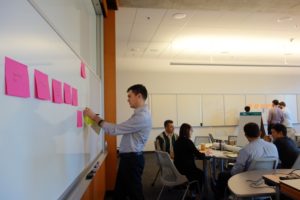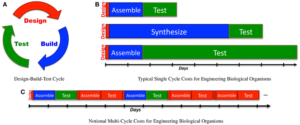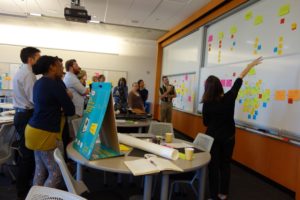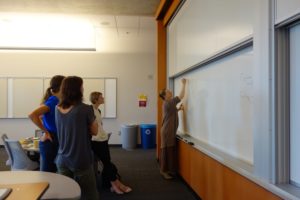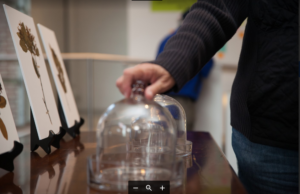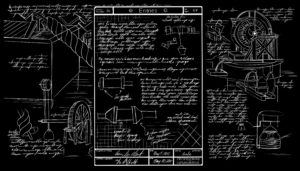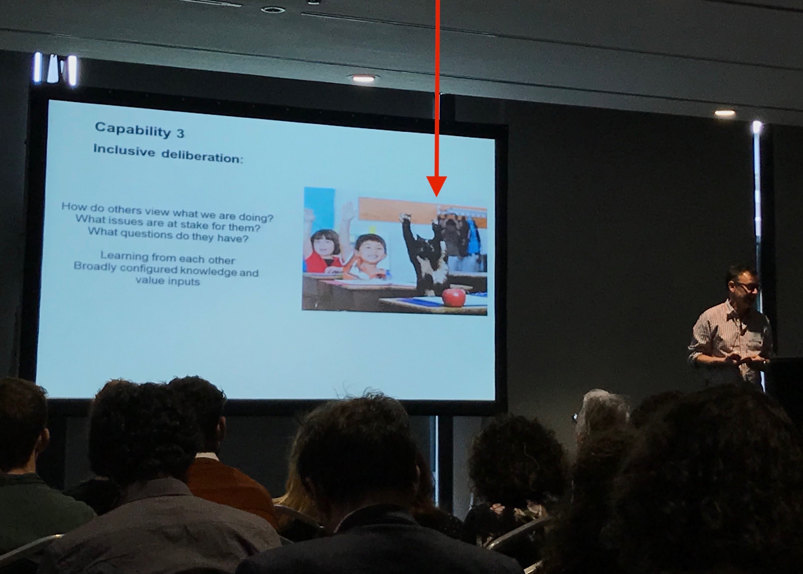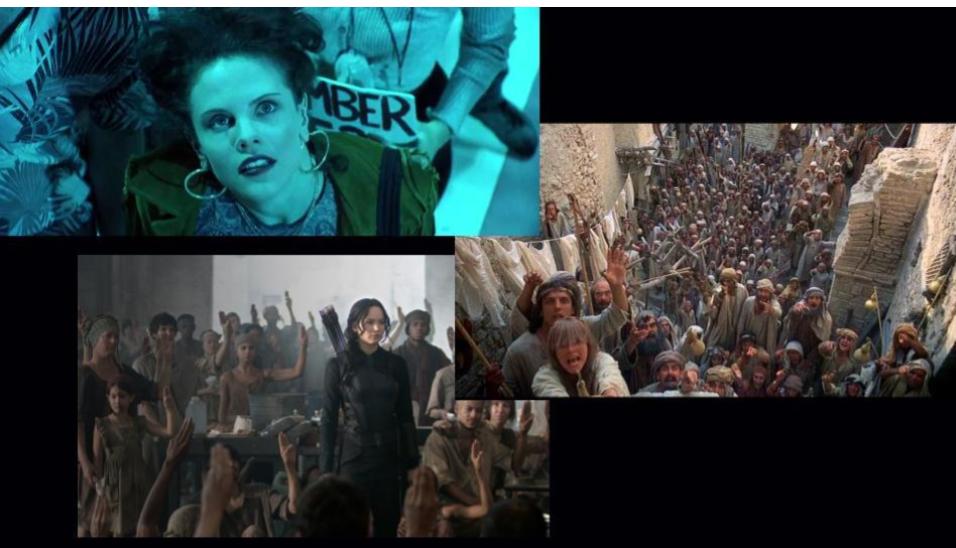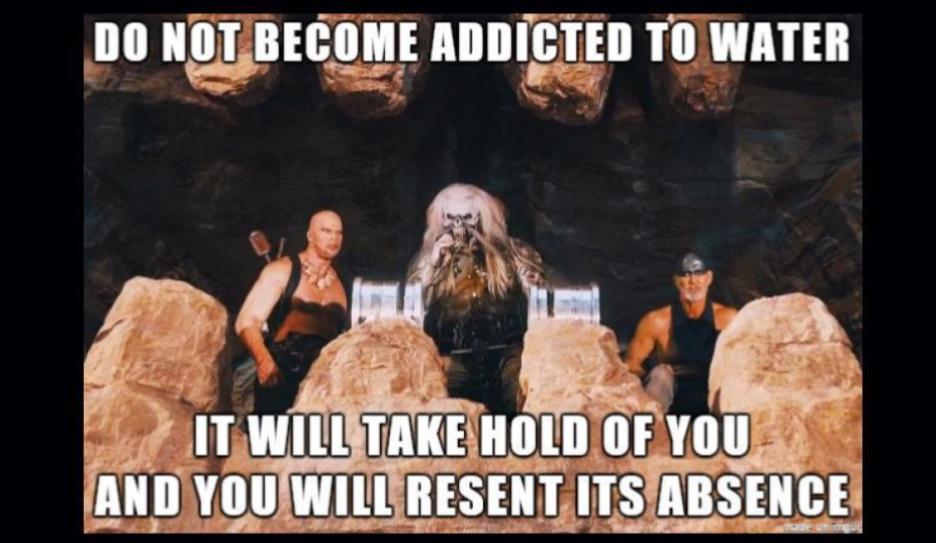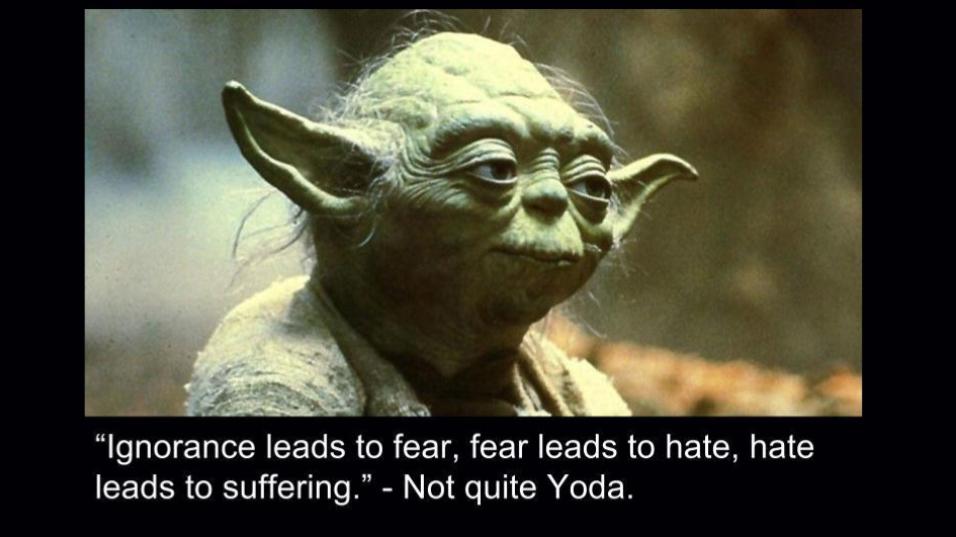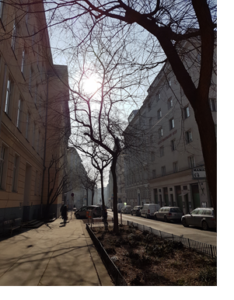One way to give a history to something like synthetic biology is to reduce it down to a narrower collection of parts, and then produce a history of the origins and development of those parts. Each part that gets followed over time will twist and turn according to its own purposes, unable to know what is going to come next, and much more interested in the then and there. Such an approach, if replicated for a range of parts, provides a set of analyses, a skeleton, ready for fleshing out and fully fashioning. This is what I am doing by selecting out ‘DNA synthesis’ and trying to tell its history. In the process we will learn much that puts synthetic biology in a new light. After all, as young as the identity ‘synthetic biologist’ might be, most of its adopters have had long careers, many based in the biological sciences. Most people are therefore very comfortable with the idea that contemporary sciences and technologies do not arrive with a flash, but are pulled together from a variety of different and somewhat unconnected developments that took place over time. It is all the more distressing and depressing then when others come along and try to bang on about how new it all is, never before seen, never even contemplated before, etc. etc.
I am amongst a group of historians of science who have attempted to use history as a lens through which to perceive synthetic biology, find its parts, and explore their trajectories and significances over time. In return, synthetic biology has challenged my own category making, asking me to think again about science, technology, engineering, and their relations. Having now been convinced that there is much more going on when we talk about engineering, I am keen to see this agenda progress within my research community of historians and philosophers of science, and so I can be grateful to synthetic biology for that gift (my more direct gratitude goes to the people who won the Engineering Life project funding, and whose research convinced me that engineering presents important epistemological challenges).

Left to right: Dr. Jody Roberts (Director of Science History Institute’s Institute for Research and managing director of SHI); Dr. Dominic Berry (Research Fellow, Engineering Life Project); Marv Caruthers (Distinguished Professor of Biochemistry and Chemistry at the University of Colorado, Boulder and pioneer in DNA synthesis); Dr. Robert G. W. Anderson (President and CEO of Science History Institute), in the biochemistry and biotechnology section of the SHI museum. My thanks to Samantha Blatt of the SHI for taking this photograph and permission to use it.
The above introduction, which includes a tiny bit of my biography, and a whole heap of ‘reasonable fellow’ talk, was designed to get you in the mood for this post, which reports on an event that the Engineering Life project organised at the end of 2017. Last December, in collaboration with the Science History Institute in Philadelphia, we organised a 1 day workshop addressing the history of DNA synthesis. The chemistry, capacity, technological expression, and history of DNA synthesis seems to me to be an excellent way to cover large swathes of the history of ‘that thing called synthetic biology’, while also contributing important findings and context that matters for the history of modern biology and biotechnology more generally. Where we have countless books, articles, and resources dedicated to the history of DNA sequencing, rarely does DNA synthesis get a mention, let alone its own dedicated treatment. I am pursuing a series of oral history interviews, archive research and museum object investigations to produce an overview of the history of DNA synthesis.* The workshop I organised last year was a way to gather further information from those either researching the same or similar topics, and just as importantly, hear from those who helped establish a synthesis market, or are now trying to expand the industry. The topic of DNA synthesis requires us to be historians of chemistry, technology, biology, and engineering all at once.** As you can imagine, it was an interesting and challenging day!
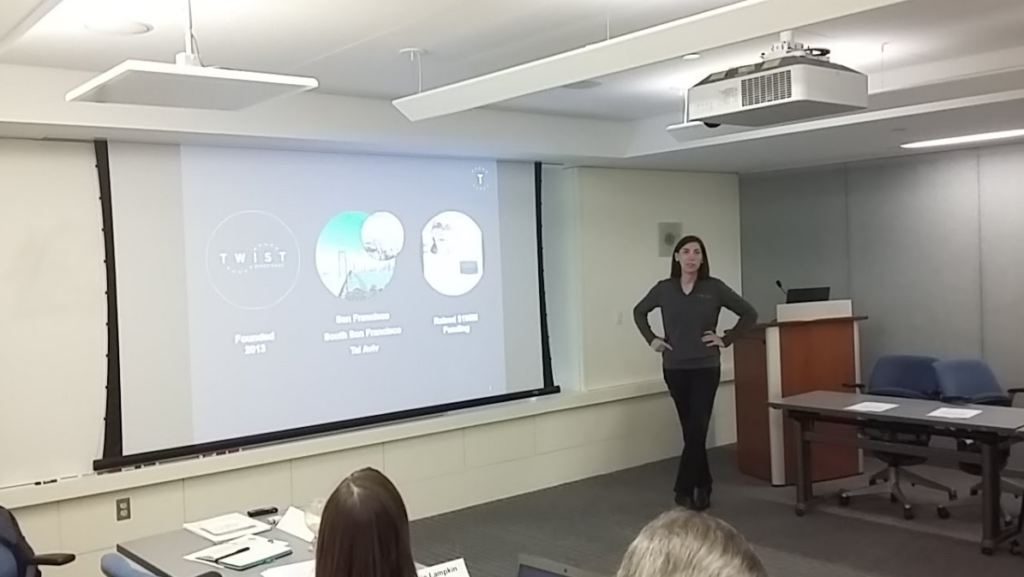
Dr: Emily Leproust (CEO Twist Bioscience, a large DNA synthesis provider founded in 2013).
In the next few months we will publish a report that gives an overview of the papers presented and the discussions that followed, in this post I just want to record the presenters, and also my depth of gratitude to everyone who agreed to participate. You can find them and their abstracts below.
What’s next?
For myself, the next outing for my research on the history of DNA synthesis will be at the Society for the History of Technology annual conference, provided the panel is accepted! I am interested in how the work of people like Ann Johnson in the history of engineering can be picked up and applied to the creation of synthesised DNA, in the variety of forms this might take, and expressed in a variety of techniques and technologies. Following synthesised DNA allows us to appreciate the material-semiotics of biology and biological technology, while also attending to material culture (the tools, equipment, and objects associated with these practices that one might want to display in a museum).
Lastly
This is also, as far as I know, the last blog post I will write for the Engineering Life project. It was a great privilege to work as part of Jane Calvert’s team, and the experience of collaborating with social scientists, at times learning social science methods, is one that will stay with me. I have learnt and will continue to learn a great deal from them, and owe them much more than I contributed.
*If you would be interested in talking to me about the history of DNA synthesis please do get in touch. d.j.berry@lse.ac.uk
**Some might want to put ‘medicine’ in there too, but I bloody hate the history of medicine, so I’m happy to just get on with doing my thing, and let them all come along later to tell me why I’m impoverishing my account by not addressing medicine. Or more likely, come along and tell me why it all only really matters once we recognise the medical context. GO AWAY! Take your money and leave me in peace!! No, I’m not feeling OK. Can you get me a water? Thanks, that’s kind.
Alok Srivastava & Elihu M. Gerson –Understanding Wholes: Synthesis of Viable Genomes and Organisms:


Jane Calvert –Synthetic yeast: a tale of sixteen synthetic chromosomes

L. Scott Cole –Selling DNA Synthesis: Applied Biosystems’ DNA Synthesis Business from 1989-1992

Emily Leproust –Development of DNA Synthesis

Marvin H. Caruthers –The Chemical Synthesis of DNA, RNA, and Certain Analogs

Erin McLeary, Stephanie Lampkin, Amanda Mahoney –The material heritage of DNA synthesis?
Jeff Johnson –Factors shaping research in synthetic-chemical biology in the postwar West-German context (1945-1990): Report on a work in progress

Robert Smith –Visions of value and the making of mega-chunks

Workshop Abstracts (by author surname)
Jane Calvert
Synthetic yeast: a tale of sixteen synthetic chromosomes
The synthetic yeast project is an international effort to comprehensively re-design and construct the genome of the yeast species Saccharomyces cerevisiae wholly from laboratory-synthesised DNA. The dual aims of the project are to learn more about yeast biology and to develop improved yeast strains for industrial use. Many changes are being made to the genome to further these aims, including removing repetitive regions of DNA, constructing a ‘neochromosome’, and building in the ability to evolve the yeast on demand. Questions arise about whether the completed synthetic yeast – known as Saccharomyces cerevisiae 2.0 – will be a different species from the wild-type.
Unlike other branches of synthetic biology, which focus on building discrete genes or genetic circuits, the synthetic yeast project is an example of construction at the whole genome scale. It follows in the steps of previous viral and bacterial whole genome synthesis projects, but is approximately an order of magnitude larger. The size of the project requires an internationally distributed effort, involving the coordinated activity of eleven labs across North America, Europe, China, Singapore, and Australia. The sixteen chromosomes are distributed around this international consortium.
This presentation draws on interviews with members of the project consortium, and visits to the different laboratories. Although all the synthetic chromosomes are designed at the PI’s laboratory in NYU (with the exception of the neochromosome), the individual laboratories have pursed different synthesis and assembly strategies. For example, in Tianjin, China, one of the chromosomes was entirely synthesized by an undergraduate class as part of a ‘build-a-genome’ course. These different chromosomes also have different qualities and characteristics, and the scientists often refer to these to identify their ‘favourite’ chromosome. In addition, several of the laboratories are starting to design their own novel, bespoke chromosomes.
Some hope that the synthetic yeast project marks the start of a new era of whole genome ‘writing’ projects, which will involve the synthesis of the genomes of a range of species, including the human. Whether or not this initiative progresses as planned, I argue that whole genome synthesis projects would benefit from increased sociological, historical and philosophical attention.
Marvin H. Caruthers
The Chemical Synthesis of DNA, RNA, and Certain Analogs
The chemical synthesis of DNA/RNA dates from the mid 1950s in the laboratory of Sir Alexander Todd. Shortly thereafter Gobind Khorana pioneered the use of synthetic DNA/RNA for solving various biological problems such as the genetic code and the use of sequence defined oligonucleotides as templates for DNA/RNA polymerases and to solve biological problems including the synthesis of genes and studies on how proteins recognize DNA/RNA. Following this initial work, Bob Letsinger developed an entirely new synthesis methodology that was used in the initial DNA sequencing methods from Sanger’s laboratory and for synthesizing the human insulin and human growth hormone genes – developments that led directly to the establishment of the biotechnology industry. A brief review of these methodologies and some of the lessons learned about pioneering basic research will be discussed.
From 1977-1982 Professor Marvin Caruthers developed the use of nucleoside phosphoramidites as stable monomers for the solid phase synthesis of DNA and RNA. This ground-breaking chemistry was far superior to anything at that time and, even today some 35-40 years later, remains the methodology of choice for synthesizing DNA/RNA. Its chemical accuracy has enabled it to be deployed from the micromolar scale of DNA oligomer preparation for various clinical applications down to microdot, nano-scale chemistry that is used for numerous biological, biochemical, diagnostic, and chemical applications. Currently and in collaboration with Agilent, Prof. Caruthers has adapted this chemistry to the synthesis of DNA on glass chips (244,000 DNA segments per chip at 200-300 nucleotides in length/segment). For many different research applications, this on-chip process is performed at the level of 6 to 20 billion nucleotide condensations per day (the equivalent of several human genomes of 3 billion base pairs). Moreover, this work is now at the core of current DNA and RNA sequencing technologies. Modern biology could not have achieved its explosion of discovery over the last 40 years without the near-flawless phosphorus chemistry that the phosphoramidite methodologies have delivered to science and technology.
Notwithstanding the tremendous success of this basic phosphorus chemistry, Prof. Caruthers continues to develop the chemistry of key P(III) species for new purposes. If time permits, the synthesis of a new analog called thiomorpholino DNA will be discussed and certain initial biological results will be presented.
L. Scott Cole
Selling DNA Synthesis: Applied Biosystems’ DNA Synthesis Business from 1989-1992
From its founding in 1981 until its acquisition in 2008, Applied Biosystems’ Incorporated (ABI, Foster City, CA) was the leading supplier of instrument and reagent platforms for life science research. In 1985, the company introduced the Model 380A DNA Synthesizer, its first commercial platform for phosphoramidite-based DNA synthesis. Over the next several years, a combination of improvements in both DNA synthesis instrumentation and reagents enabled the company to achieve a dominant position in the DNA synthesis market worldwide. In this talk I will provide a commercial perspective on oligonucleotide synthesis based on my experience as Product Manager for DNA synthesis at ABI from 1989 through 1992. This was a time at which the need for synthetic oligonucleotides was growing rapidly, primarily based on rapid growth in the use of the Polymerase Chain Reaction (PCR). I will discuss ABI’s entry into the DNA synthesis market, the competitive landscape at the time, how the company’s DNA synthesis team was structured and how it operated, and I’ll provide a sense of ABI’s corporate culture at the time.
Jeff Johnson
Factors shaping research in synthetic-chemical biology in the postwar West-German context (1945-1990): Report on a work in progress
The purpose of the present paper is to examine some of the factors affecting the political, institutional, and scientific context of research in synthetic-chemical biology in postwar West Germany, 1945-1990. It is well-known that the West-Germans were considerably behind their colleagues in other western nations (particularly Britain, France, and the United States) in taking up the challenges and opportunities posed by the postwar development of molecular biology and the various technologies leading to genetic engineering. In some ways this is a surprising phenomenon, because at least until the 1930s the Germans had been among the world leaders in a field that I will designate as synthetic-chemical biology, using the terminology of Emil Fischer in 1915; unaware of Fischer’s earlier terminology, Ernst-Ludwig Winnacker introduced the term “synthetic biology” into the German context in 1983, applying it specifically to the synthesis of genes.
Obviously one of the critical factors affecting the German situation was the impact of National Socialism, not only its purges of German scientific institutions but also the destruction brought about by its failed war of conquest. Beyond these factors were others inherent in the post-Nazi German context of the mid-20th century. In this paper, I would like to examine some of these factors by looking at specific examples of German organic chemists and biochemists in their institutional contexts, considering both the elite Max Planck Institutes (such as the MPI for Biochemistry in Munich and the MPI for Medical Research in Heidelberg) as well as university institutes in related fields. I am also interested in considering the extent to which the German chemical and pharmaceutical industry in the postwar era continued its decades-old tradition of promoting close academic-industrial collaboration. Finally, I would like to examine the political context, including German debates over the ethics and risks of biotechnology and genetic engineering during the 1980s. When Winnacker introduced the term synthetic biology, the German debate was just beginning; it culminated in 1990 in the first German Genetic Engineering Law, whose origin should be seen in the light of the historical and cultural burden of Nazi atrocities.
Emily Leproust
Development of DNA Synthesis
Oligonucleotide synthesis is the chemical synthesis of nucleic acid fragments with defined sequences. The first chemically synthesized dinucleotide was demonstrated in 1955, marked as the beginning of the era of oligonucleotide synthesis. After decades of research and progressive improvements by pioneers such as H. Gobind Khorana, Robert H. Letsinger, and Marvin H. Caruthers, a breakthrough was achieved in 1983 when Caruthers developed phosphoramidite chemistry, which involves stepwise addition of phosphoramidite building blocks derived from protected nucleotides upon activation by tetrazole prior to coupling. The phosphoramidite method together with the advancement in solid phase chemistry made possible the development and commercialization of the first automated DNA synthesizer by ABI in the 1980s, and broadened the accessibility of synthetic oligonucleotides to biologists. While the core phosphoramidite method remains virtually unchanged in the last three decades, significant advancements have been made on the engineering front, enabling highly parallel in-situ synthesis of oligonucleotides in array format, in which oligonucleotides are directly synthesized on the surface in a spatially addressable manner. Hundreds of thousands of oligonucleotides can now be synthesized in parallel, together with the advancement of Next-Generation Sequencing technologies in the last decade, fueling the rapid growth of many fields including genome-scale screening and editing, large-scale synthetic biology, and DNA-based data storage.
Erin McLeary, Stephanie Lampkin, Amanda Mahoney –
The material heritage of DNA synthesis?
What is the material heritage of DNA synthesis? In this interactive session, workshop attendees and CHF museum staff will collectively imagine a museum of DNA synthesis. What artifacts would be displayed in this museum? What stories would those artifacts tell? For what audiences should those stories be told? And what would it take to move from an imagined museum to a collecting initiative that acquires and preserves the material heritage of DNA synthesis?
Robert Smith
Visions of value and the making of mega-chunks
This workshop addresses DNA synthesis as historiographically neglected. Today DNA synthesis seems to be going through somewhat of a resurgence. For instance, in Britain the UK taxpayer has indirectly contributed more than £150m to synthetic biology projects. Included in this figure is roughly £17,528,700.00 towards six so-called ‘DNA foundries’. In the United States the Broad Institute has recently been awarded a five-year, US$32 million contract from the Defense Advanced Research Projects Agency (DARPA) to design, fabricate, and test large DNA sequences at scale. Similarly, and with much bombast, a team with George Church, Jef Boeke and Andrew Hessel have proposed a new grand challenge — the synthesis of large scale chunks of DNA — accessible for the modest price tag of £500m.
The rhetoric surrounding many of these investments is unsurprising to anyone following new and emerging forms of knowledge production and technology creation. And yet at the same time, past work has shown that such claims are not isolated or detached from reality. Perhaps the most blunt example one can give is to point to the fact that claims about future value are excellent ways to enrol people into a project. We should then pay analytic attention to claims about the purpose of doing DNA synthesis and the ways that they are built into websites of objects, people, places, and values.
In this talk I will take a first pass at doing just that. To do so I will draw on early reflections from on-going documentary work and observational material at synthetic biology conferences around the world. I will examine the cultures that such narratives claim to produce, the values that they embed and the significance of these things, both for life as we know it and for the social and human sciences as we relate to the natural and physical sciences.
Alok Srivastava & Elihu M. Gerson
Synthesis of Viable Genomes and Organisms: Understanding Wholes
This paper explores some issues raised by the synthesis of complete functional units – genes, pathways, biochemical complexes and the extension of this work to the making of autonomous wholes such as viable genomes and cells. Synthesis experiments generate a unique kind of understanding, achieved by de-composing and re-composing functional units. Such efforts directly address the descriptive and interactional complexities of biological systems and their constitutive mechanisms.
Synthesis experiments interpret mechanisms by demonstrating that articulated parts, refined and reassembled, behave as we expect them to. Synthesis experiments reveal and mark gaps between the explanations and manipulative results, and help specify the efforts to fill these gaps.
In synthesis experiments, scientists must learn to deal with incomplete systems that are not (yet) complete or viable. Laboratory procedures act as scaffolds that provide functional support for intermediate stages of construction. For example, a database containing the sequence of bases of a full bacterial genome keeps the order and content of the organism’s genome while it is being chemically synthesized and biochemically assembled. This computer file thus functions simultaneously as a scaffold for the genome under construction, and as an important part of the laboratory’s work organization.
The laboratory thus acts in place of the cell, supporting and enabling the assembly process by developing and deploying a set of protocols that specify needed resources and context to the incomplete system. These protocols also serve as bookkeeping devices that mark the parts of explanation(s) that are not yet realized as manipulation capacities.
Synthesis thus operates by mapping and tracking the relationships between de-composition procedures and corresponding re-composition procedures. Making and testing complete functional units enforces a reconciliation among the different groups of procedures.It is useful to understand synthesis experiments as explaining biological systems by carrying out re-composition experiments corresponding to de-composition experiments. A particular kind of understanding is achieved by these full cycles of de-composition and re-composition experiments of functional units and autonomous wholes that directly address the descriptive and interactional complexities of biological systems and their possible mechanisms.

